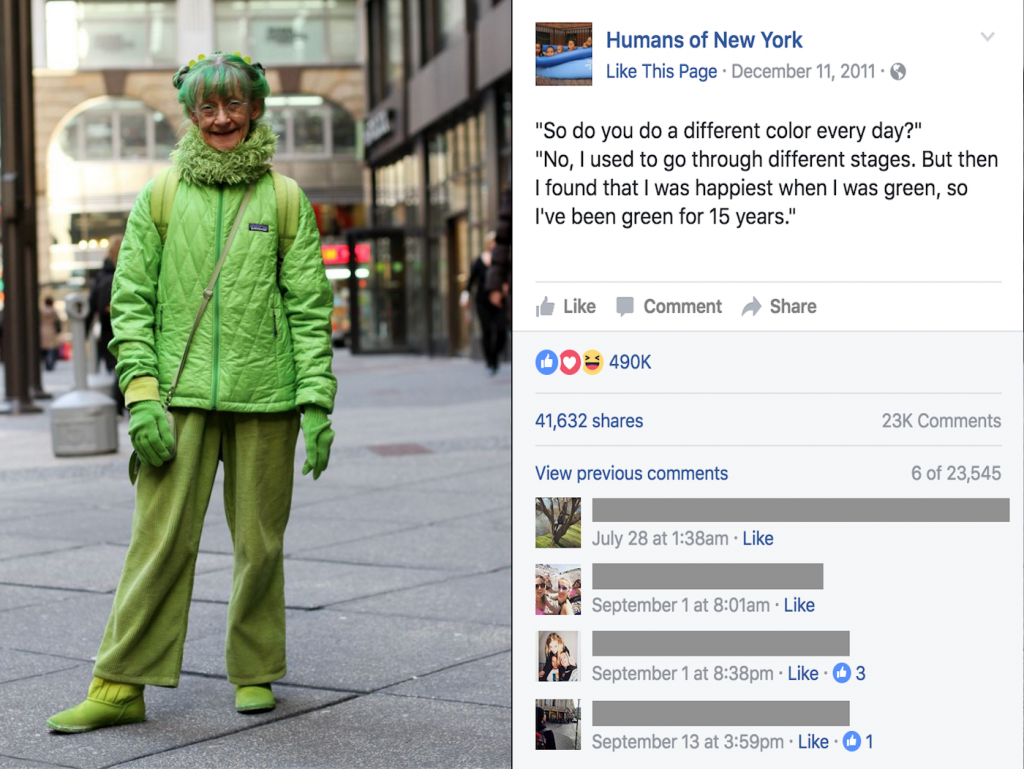By Gaby Lohner
Last week, University of Georgia alumnus Brandon Stanton returned to campus to speak to a few hundred students and Athens residents. While some of you may not know his name, you almost certainly know his work – he is the owner and operator of Humans of New York, a photography project that captures the lives of “average” New Yorkers. Since its inception in 2010, the blog known to fans as HONY has exploded in popularity, boasting over 17 million Facebook likes. Stanton spoke on his roots, inspirations, and experiences during his hour-long presentation.
Stanton began the story of his success at an earlier starting point than he typically does. He opened with his experience at UGA, seeing as he was speaking to a room full of students who sit in the buildings he once did. After a short stint at UGA where he, in his own words, “didn’t even flunk out, [he] just, like, completely flamed out,” Stanton returned to the university to study one of his passions to this day, history. While attaining his undergraduate degree, he was building the foundations of HONY, unbeknownst to him. He purchased a video camera and interviewed a few strangers, including Tom, the basketball star of Ramsey, just out of what he calls “natural curiosity.” At this point, his Facebook page, Instagram, and top-selling books weren’t even an idea.
After graduation, Stanton was offered a position as a trader at a lucrative financial firm in Chicago. As a history major who had a few bumps in his college career, he saw this as a fresh start, something that he could take enough pride in to subtly brag to his friends about on Facebook. After two years of “fascinating” but exhausting work within the financial industry, he lost his job. He described the unexpected happiness he felt the day that he was let go, instead of the panic, fear, and anger that often accompanies being laid off. On that day, he decided to start spending his time doing what he wanted to do.
And thus begins his path to HONY. Stanton grabbed a camera, found his way to New York, and took pictures. A ton of pictures. At the inception of the blog, he posted pictures of the stand-outs he saw around the city; people who were unique, who demanded attention. He had a few thousand followers and was gaining around 10 every week, noting to a friend, “In a few years, I’ll have 10,000 Facebook fans!” The pivot from a picture to a story happened with “the Green Lady.” Stanton saw this woman, dressed head-to-toe in green, walking down the street. He took her picture and spoke with her briefly. He ended up posting the picture and decided to caption the photo with something interesting the woman said to him. The post quickly became the most liked photo on his page, and it changed the way he thought about his work. Maybe, instead of putting all the emphasis on the photograph, he would put it on the words, the stories of the people he talks to. Stanton remarked that today, “the photo is very secondary.”

That pivot was probably the smartest career move he’s ever made. Today, Stanton’s posts captivate the Internet – each one gets hundreds of thousands of likes and thousands of shares and comments. His favorite part is that the page is overflowing with positivity. Stanton says that his fans are “the nicest twenty million people on the internet.” Somehow he has managed to find something that feels like an internet safe space, one in which people put aside their prejudices, hateful comments, and the general anger that seems to drive many Facebook interactions nowadays. The comments on the posts are supportive, understanding and friendly.
Like with any other celebrity, the question of social responsibility comes into play. People with millions of followers have the platform to push for whatever social causes their hearts desire, Stanton included. Some celebrities may try to ignore this aspect as it can affect their image, but Stanton accepts it with open arms. He has worked with the UN to photograph the people of Iraq, South Sudan and India, among others. He has interviewed inmates in five prisons across the Northeast, and he did a series on pediatric cancer that went on to raise $4 million dollars for the pediatric division at the Memorial Sloan Kettering Cancer Center. He has spoken to Syrians who were chosen to resettle in America. In a time when refuges are referred to as “them,” Stanton provides a platform that humanizes the group.
Stanton recently interviewed presidential hopeful Hillary Clinton, and in the past he has had the opportunity to sit down with President Barack Obama. When asked whether he would be willing to interview Donald Trump, he laughed, asking if he “should go down that road.” He continued by saying no, he would not be willing to interview Trump, because that would entail “normalizing” his behavior and ideals. He considers Trump a demagogue who uses anger, resentment, and his strong personality to garner support. He speaks openly on his views in person and on his page. Earlier this year, he penned a note to Trump, speaking specifically on the candidate’s statements about Muslims. “I try my hardest not to be political,” he begins in the note, and continues by condemning Trump for his generalizations of Muslims.
Brandon Stanton is one of the most influential bloggers on the internet today. While there are many people out there with as many followers as Stanton, there are few who make an impact on such a scale. He is changing perspectives and, with that, lives. Whether it be a group of people getting together to buy an Afghani man a new tractor after his broke down, or a post that makes someone smile, Stanton is creating mobility and action in a world that is too often characterized by a lack of empathy. At the lowest level of influence, he is making everyone stop and think. HONY shows that we all really aren’t that different. Each human, from New York to Syria to Athens, has their own story.
